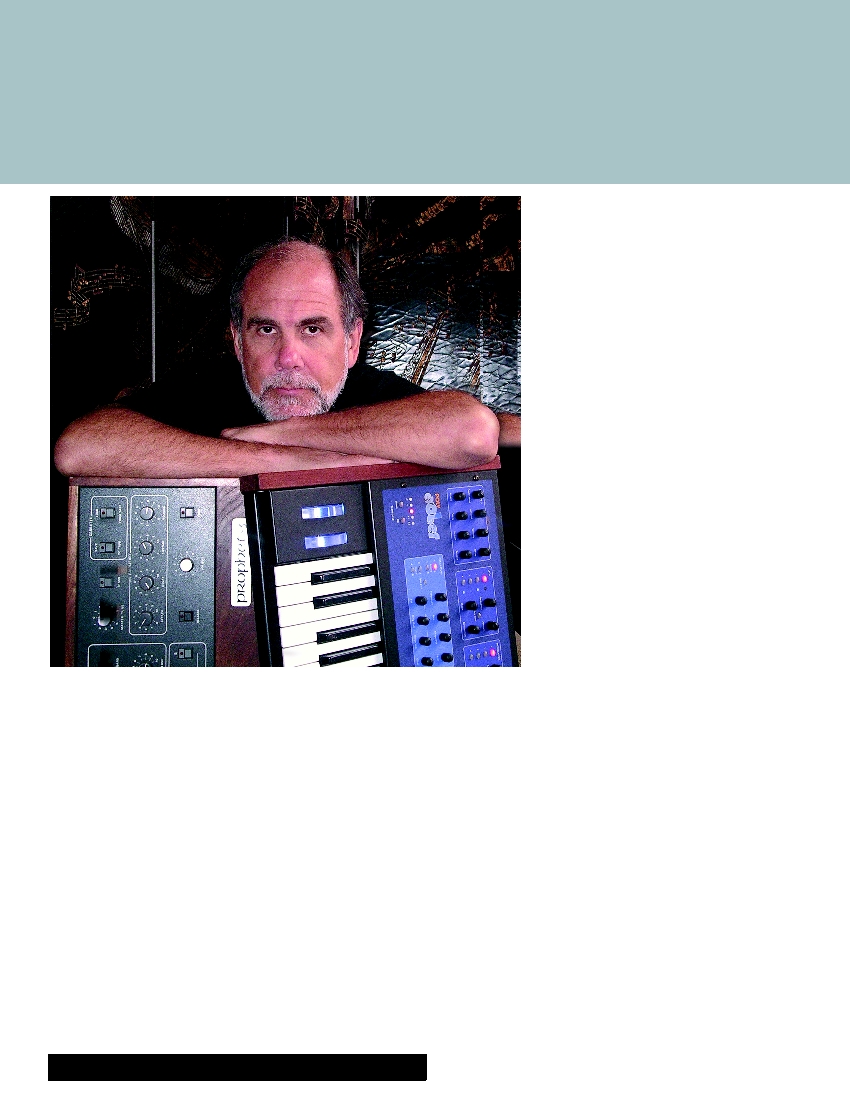104 Producerís Edge Magazine Fall Winter
S
ince last we spoke about the
new analog beastie from Dave
Smith Instruments, the Prophet
08 [rack-mountable] desktop has
landed. In a season marked by the
return of retro pieces, we talk to
synth designer and father of MIDI,
Dave Smith.
Can we go back to the days at
Sequential Circuits; can we start
there and talk a little bit about the
Prophet-5, and how that came to be?
Dave Smith
: Basically I got the idea
of doing a Polyphonic Programmable
Synthesizer because I knew the parts
I needed for the synthesizer functions
were becoming available. I had already
been working with Microprocessors for
quite a while so I knew how to do that.
That was a necessary step to do it all.
But initially I actually hesitated
and didnít go forward. I decided not
to do it because I was a very small
company; it was mostly just me back
then, and we were building accessories
and sequencers and things like that. I
just figured it was such an obvious
next idea for the two big companies
at the time- Moog and ARP. I was
convinced that they must have been
doing something similar, because
it felt so right to build a Polyphonic
Programmable Synthesizer.
I waited a few months with that
assumption, and finally tired of waiting
and decided to just take the plunge
and go ahead and do it! That was
spring 1977. I spent the rest of the year
designing it. We announced it in January
of 1978, so itís about 30 years ago.
Was it at that point that you said
okay, this is it for me, this is my life
from now on and this is my lifeís
dedication?
All I was doing before that was
building synthesizers, so I had already
decided I wanted to design stuff. And I
was having fun doing it. That was, of
course, the first major instrument - the
first real instrument I had designed, so
it just cemented the deal.
How did you stumble across MIDI?
That was far from an accident. The
Prophet-5 was actually the first
instrument, musical instrument, that
had a Microprocessor and within two
or three years all the other companies
started putting Microprocessors in
their synthesizers. Once you have
a Microprocessor in an instrument
you realize that itís fairly easy for it to
communicate with another instrument
with a Microprocessor.
So at Sequential Circuits we
developed a high speed digital interface
we used for connecting sequencers to
the Prophet-5, and remote keyboards,
and computers and so forth. At the same
time, Roland developed an interface
and Yamaha and Oberheim had
proprietary interfaces they were using.
We quickly realized it would
be silly if everybody only had their own
interface because no one can connect
Dave Smith
Dave Smith instruments
In
d
u
s
try
In
s
id
e
r
Synth Designer

